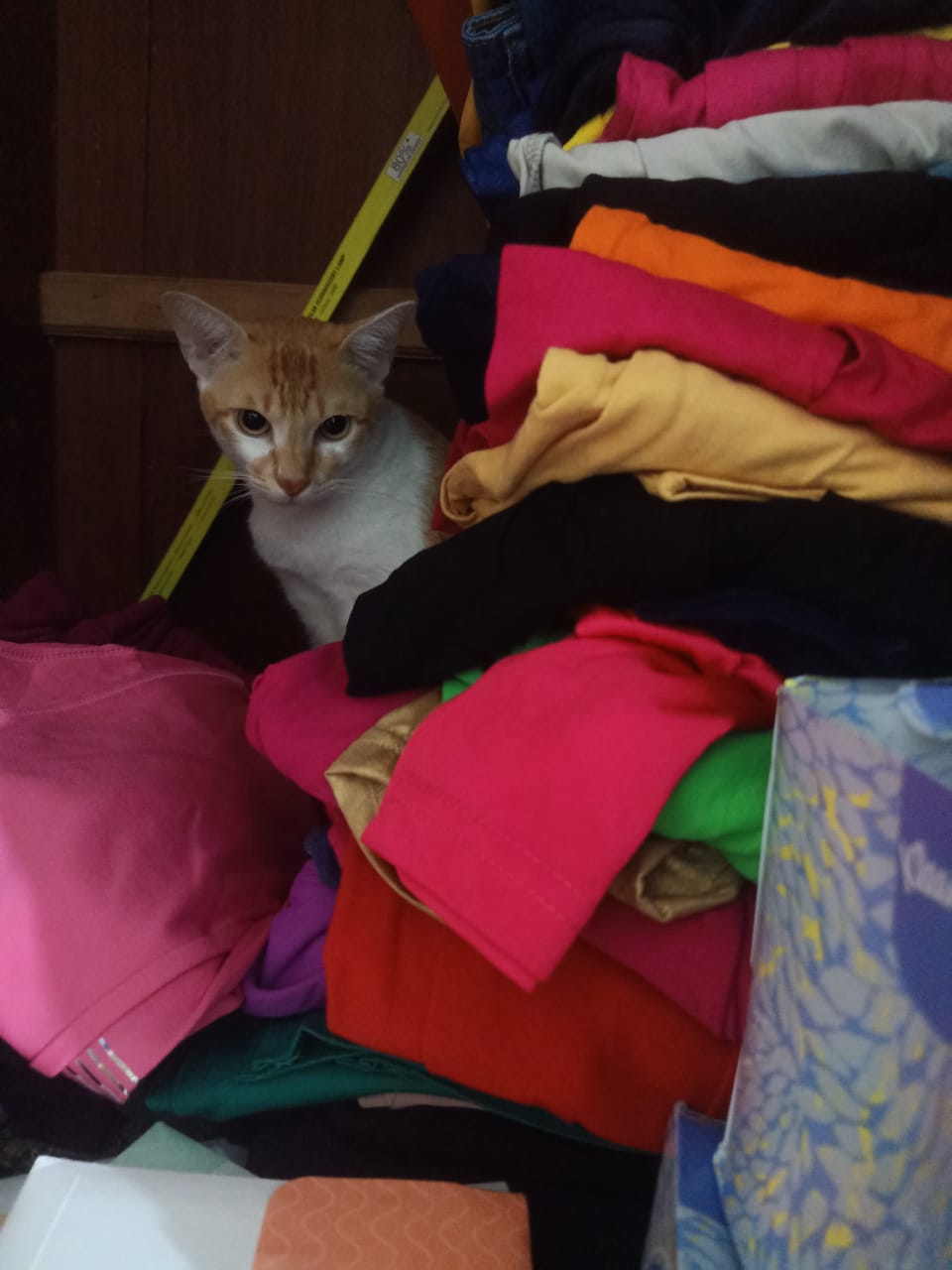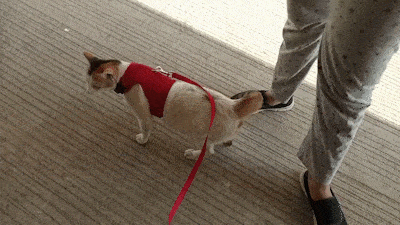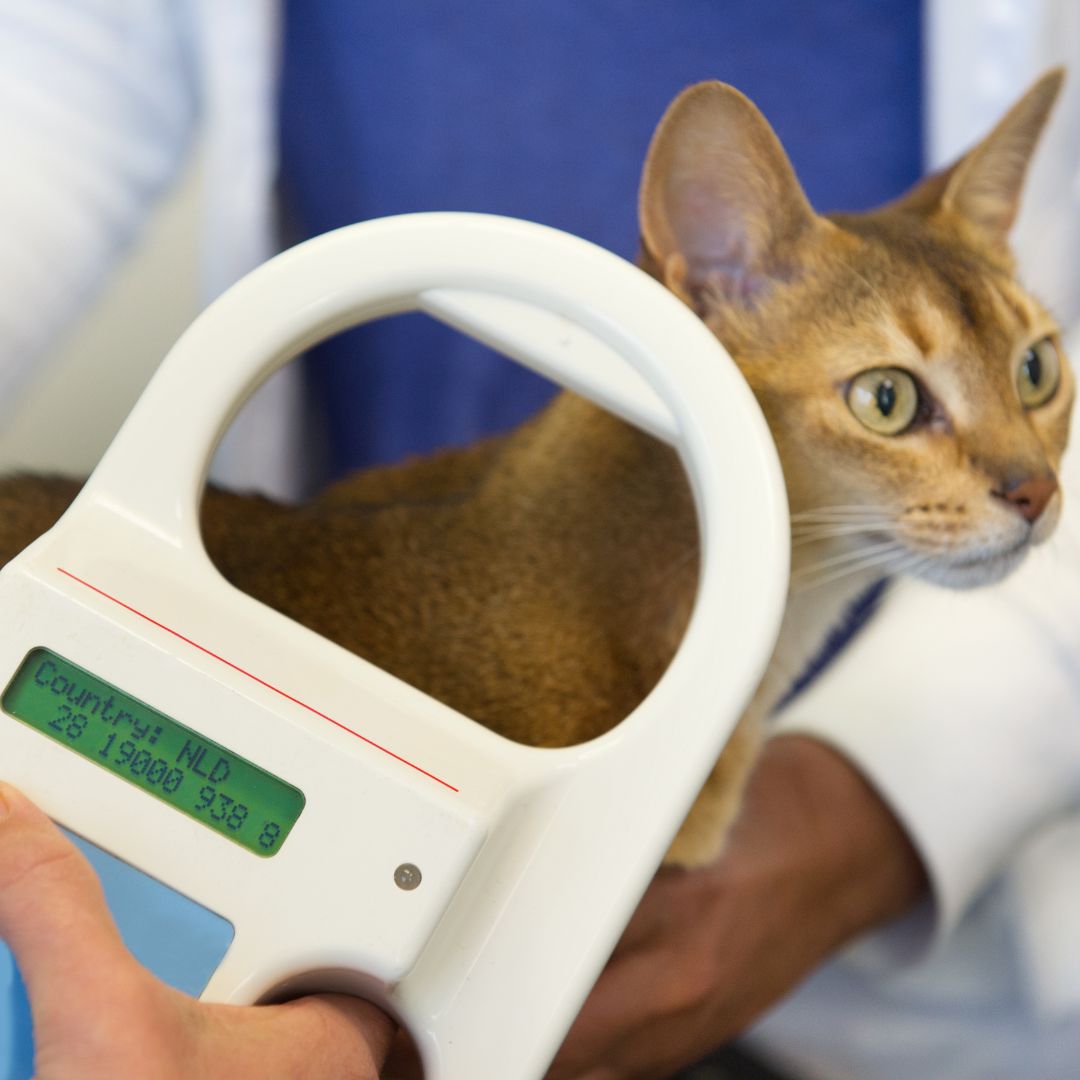Desperate to find a lost cat? Calm down and follow these immediate steps:
- Act quickly. Start the search. Do not wait for your cat to return on its own.
- If cats mistakenly step out of the house, mostly they do not go too far as they want to be close to their familiar territory. Look thoroughly in nearby hiding spaces.
- Pay attention to any potential hiding places – wardrobe (any stack of clothes), kitchen cabinets, under the bed, behind the refrigerator, on top of the cupboards, washing machine, cardboard boxes.
- Check the immediate surroundings, including rooftops, gardens, and garages.
- If you live in a housing complex, check two floors above and two floors beneath.
- Cats may try to find their way back by following familiar scents or landmarks. Place objects that carry the cat’s scent strategically along the path leading back to your home.
- Place your cat’s litter box and food bowl outside the house. Your cat may be able to find their way back by the smell of its belongings.
- Check with your neighbors. Ask them to search their balconies and kitchen or any other possible hiding space. Tell them to inform you in case they have any hint.
- Look out actively in the early morning and late evening hours.
Follow these steps and while you await the return of your dear furry friend, read on for a deeper understanding of how to find a lost cat by thinking like a cat. You must be having a whole of questions right now. We have answered some for you.
How can I stay calm? My cat is lost!
When we panic, we tend to miss out on the most obvious details. One afternoon, I received a message on my cat parents WhatsApp group that a cat has been missing since morning. Everyone on the group started giving all sorts of advice. The cat parent was in between reading these suggestions and applying whatever possible one after the other. She searched the entire housing society thrice. Went to the neighbors. Put up posts on social media. Left the litter box and food bowl outside the house. Continued to worry.
A couple of them on the group told her to look inside the house but she ignored it because she was certain the cat wasn’t anywhere around as their was no response to her calls. By evening, she decided to print pamphlets and distribute in her society. To get ready, she opened the wardrobe and removed a t-shirt, only to see the cat appear from behind the stack of clothes.


Where can my cat hide in this small apartment?
You will be amazed! Check every nook and corner of the house – regardless of how small or big it is – underneath furniture, inside closets, behind appliances, inside cabinets and drawers, within bedding or laundry piles, behind curtains or drapes, within crawl spaces or basements, inside cardboard boxes or bags, high places, inside a washing machine, top-bottom-sides-inside the cupboard, and behind the refrigerator. Not at any of these places? Look more.
Check all doors to make sure your cat is not stuck somewhere. Cats can lock themselves in rooms by accident, so be sure to check all doors.

Is there a way I can help my cat find her way back?
Cats navigate their environment through scent marking. They rub against objects to leave their scent. Use these objects on which the cat might have left her scent to help her find her way back. Place some (not all) of the objects strategically in the direction that leads to your home. Leave the litter box and food bowl/ treats you cats love the most outside the house as litter box would have the most prominent smell that the cat would recognize.
How can I get my neighbors to help me find my cat?
Personally reach out to your immediate neighbors with a photo and description of your cat. Request them to check their house properly and keep a lookout for any sightings. Use your emotions to convince the neighbors that the cat is dear to you – especially in India you need to do this to get the required support from your neighbors. Also, in case they find the cat in their house, request them not to leave the cat outside without informing you. This has happened to me personally, where I lost my cat, my neighbor who does not tolerate cats found her and left her out of the house. So I again lost her.
Distribute leaflets or posters with your contact details in the neighborhood, at nearby veterinary clinics, and in pet-related businesses.
Where else can I find my cat if not at home?
Broaden your search area to the immediate region. Check adjacent gardens, garages and sheds in case a cat wanders off. Remember to look up at trees and rooftops since cats are expert climbers. According to a study, 75 percent of the cats are found within 500 meters (about a third of a mile) of their point of escape. Make sure to look near your residential area, at places your cat is familiar with. I know 5 cases personally (including me and my family) where lost cats were found two floors above or below.

Does social media and animal rescue group help find a lost cat?
How much can one person do? If you truly want to find you missing cat who has not returned home for over 2 days, put up posts on social media and in online pet communities. Post images and descriptions on your personal social media sites as well as neighborhood lost and found pet forums. Get in touch with the zoos, rescue groups, and vet offices in your neighborhood. Rescuers mostly have a good sense of spotting the difference between feral/ stray/ lost cat. There are many cases where I have seen cats unite with their parents after months of being lost – thanks to online communities and rescue groups. Keep an eye out for any found cat listings on websites for animal shelters and online classifieds.
Prevention Is The Key
When it comes to protecting your cat and reducing the chances that they go missing, prevention is essential. Consider the following to prevent your cat from going missing:
Indoor Living
Living indoors can considerably lower your cat’s risk of going lost or coming into contact with hazardous situations outside. To keep them engaged, furnish your home with toys, scratching posts, and interactive playtime. Here are a few things you can do to keep your cat from boredom and make their indoor life more interesting.
Leash Training
This is an important skill to teach your cat if you wish to allow it to securely explore the outside. Allow your cat to get used to the collar and leash with a gradual introduction. Begin with brief strolls in a safe setting, rewarding your cat for good behavior with treats and playtime.

Outdoor strolls make Zuzu’s day
Enclosed Outdoor Spaces
Secure outdoor enclosures where your feline buddy can take in the fresh air and sunshine without the chance of straying away, for example; fenced balconies, cat run, enclosed gardens, and a netted window perch. These enclosures give cats a secure area to enjoy the outdoors while keeping them safe.
Don’t forget to provide your cat with enrichment in the enclosed outside space by including scratching posts, toys, and cosy seating spaces. Make sure the enclosure is still impenetrable to escape by checking it frequently for any potential dangers. Your cat can benefit from being outdoors while keeping safe and secure in a well-designed catio or enclosed outdoor habitat.
Proactive Measures For Easily Finding A Missing Cat
In case your cat disappears, proper identification is essential. Take these proactive steps to improve the likelihood that a missing cat will be found and returned to its loving human parent.
Night cameras
Place a night camera outside your house to check if there is any sighting. Possibly your cat is somewhere nearby observing your actions but not able to make its way home due to a potential external threat like another predator.
Collars and Tags
Outfit your cat with a collar that includes an identification tag displaying your contact information. Make sure the collar fits securely but is not too tight. Include your name, phone number, and ideally, an alternative contact number. Check the collar regularly to ensure it is still in good condition and readable.
Microchipping

Consider microchipping your cat as an additional form of identification. A microchip is a small device implanted under your cat’s skin that contains a unique identification number. Register the microchip with your contact information in a reputable pet recovery database. If your cat is found and taken to a veterinary clinic or shelter, they can scan the microchip to retrieve your information and contact you.
Visual Identification
Consider using visual identification methods, such as personalized ID tags or even reflective collars, to make your cat more visible during low-light situations. This can help others identify your cat quickly, especially if they are roaming outdoors.
Updated Information
Register your cat with a authorized pet registration service so they can help you when in need. Ensure that the contact information on your cat’s collar and microchip is up to date. If you move or change phone numbers, promptly update the details in the relevant databases. This ensures that anyone who finds your cat can reach you without delay.
Photographs
Keep recent and clear photographs of your cat. These can be used for creating flyers or sharing online if your cat goes missing. The photos should show your cat’s unique markings or characteristics, making it easier for others to identify them.
Remember to regularly check your cat’s identification tags and collar for any signs of wear or damage. Additionally, periodically update your cat’s microchip information and keep multiple copies of your cat’s identification photographs in safe places.
Losing a cat can be a distressing experience, but with the right approach and preventative measures, you can increase the chances of finding your furry friend and minimize the risk of future incidents. Remember to stay calm and composed when searching for your lost cat, conducting thorough searches both at home and in the immediate vicinity. Engage your community by alerting neighbors, utilizing online platforms, and contacting local animal shelters. Remain vigilant and maintain a positive mindset. Take proactive steps toward keeping your beloved cat safe, secure, and always by your side.





0 Comments